Operational Amplifiers - 2 | Analog Circuits - Electronics and Communication Engineering (ECE) PDF Download
Schmitt Trigger
The Schmitt trigger or Bistable multivibrator uses positive feedback with loop gain greater than unity to produce a bistable characteristics as shown below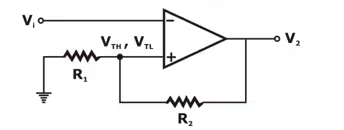 Inverting Schmitt Trigger
Inverting Schmitt Trigger
Here,
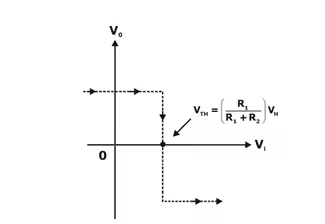 Voltage Transfer Characteristics as input voltage increases
Voltage Transfer Characteristics as input voltage increases
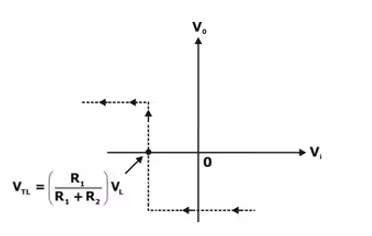 Voltage Transfer Characteristics as input voltage decreases
Voltage Transfer Characteristics as input voltage decreases
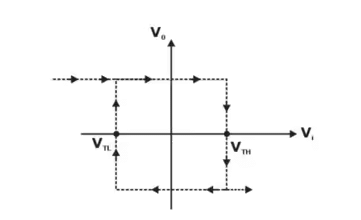 Net Voltage Transfer Characteristics showing Hysteresis EffectHere,
Net Voltage Transfer Characteristics showing Hysteresis EffectHere,

Precision Rectifier
Below figure shows a Precision rectifier and its input and output waveform.

For positive value of Vi, diode will be ON. and for negative value of Vi, diode will be OFF as shown below. Equivalent Circuit of Precision Rectifier for Positive value of Vi
Equivalent Circuit of Precision Rectifier for Positive value of Vi
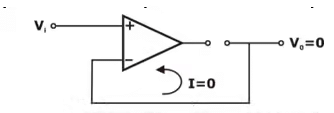 Equivalent Circuit of Precision Rectifier foe Negative value of Vi
Equivalent Circuit of Precision Rectifier foe Negative value of Vi
From the above circuit, we observe that
For Vi > 0, diode will be OFF, so V0 = 0
For Vi < 0, diode will be ON, so V0 = Vi
Thus, we obtain the voltage transfer characteristics for the precision rectifier as shown below Voltage Transfer Characteristics for Precision Rectifier
Voltage Transfer Characteristics for Precision Rectifier
Instrumentation Amplifier
It consists of two non-inverting amplifiers and one difference amplifier.
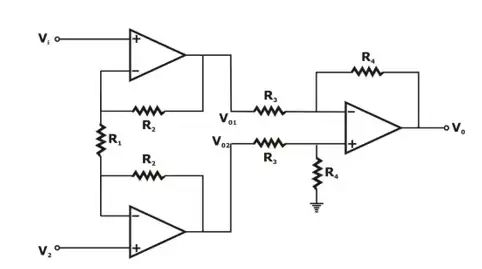 Instumentation Amplifier
Instumentation Amplifier
The output voltages of the two non-inverting amplifiers are given by:
Thus, we obtain the net output of the instrumentation amplifier as

Astable Multivibrator
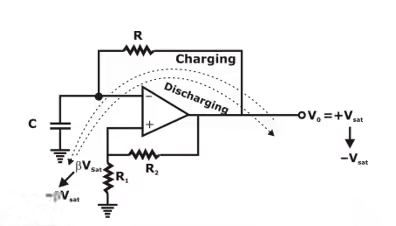 Astable Multivibrator
Astable Multivibrator

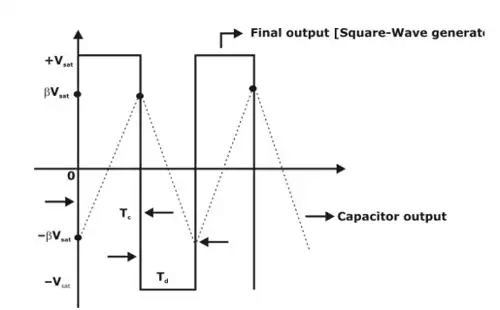 Waveform
Waveform
Here,
TC = charging time
Td = discharging time
V0 = Vfinal + [Vinitial – Vfinal]e–t/RC
Here,
Vinitial = βVsat
Vfinal = –Vsat
V0 = –βVsat
∴ –βVsat = –Vsat + [βVsat + Vsat]e–Td/RC
(1 – β) Vsat = (1 + β) Vsat .e–Td/RC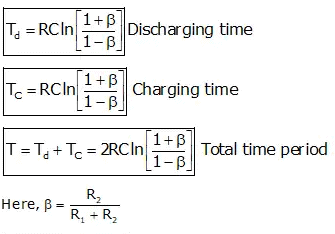

Frequency of square wave generator
Bistable Multivibrator
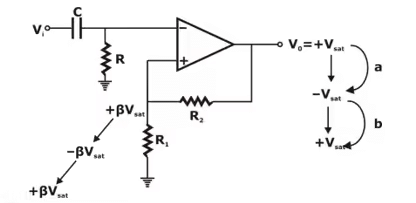 Bistable Multivibrator
Bistable Multivibrator
Here, a to b changes only after triggering and before triggering, it will be
constant = +Vsat
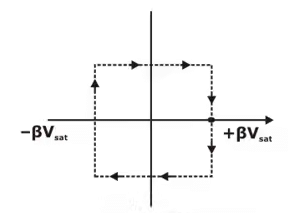
Monostable Multivibrator
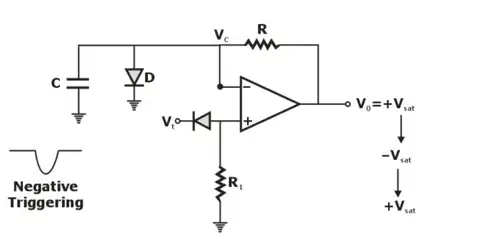 Monostable Multivibrator
Monostable Multivibrator
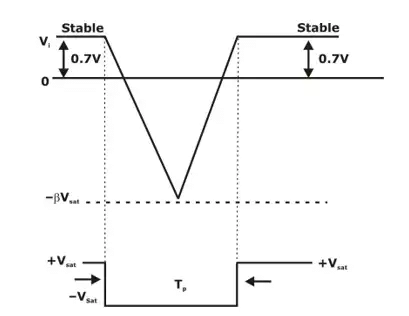 Waveform
Waveform
Time Period of Monostable Multivibrator:
TP = 0.693RC
|
3 videos|75 docs|64 tests
|
















